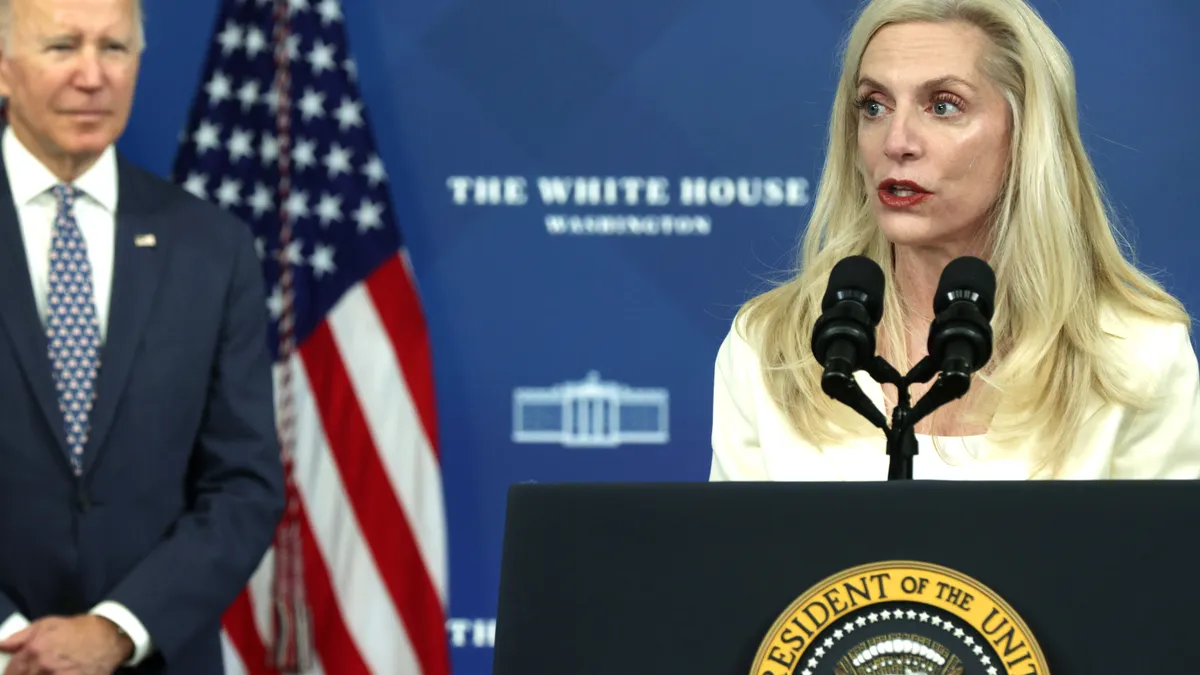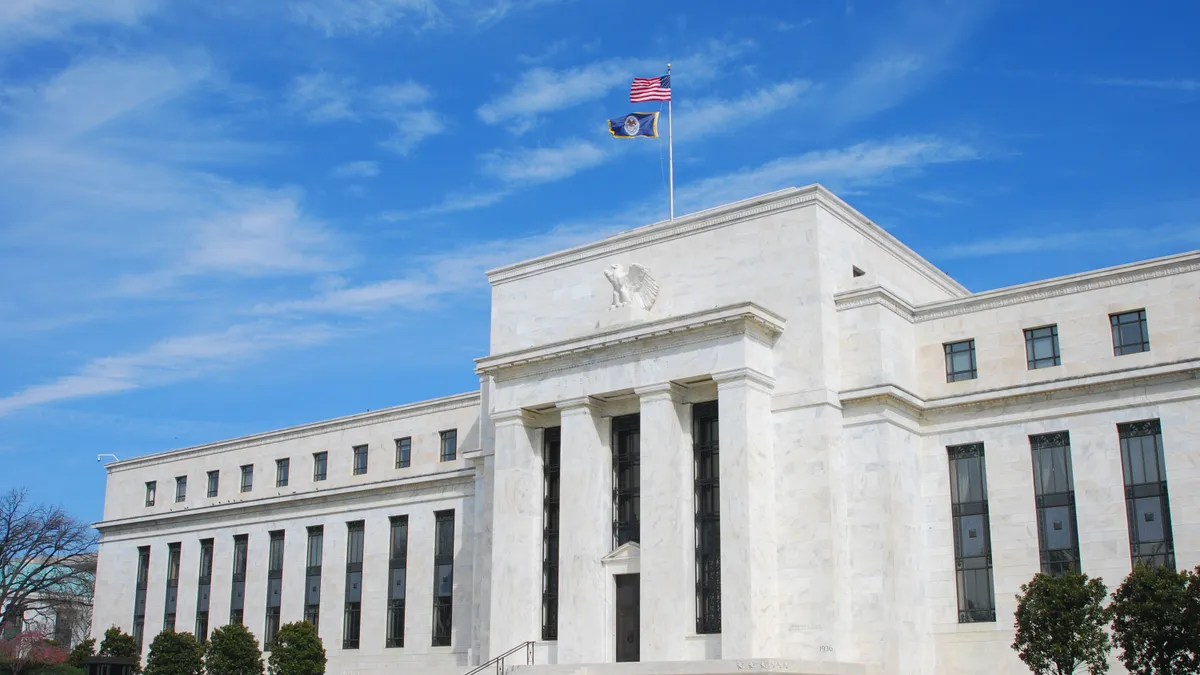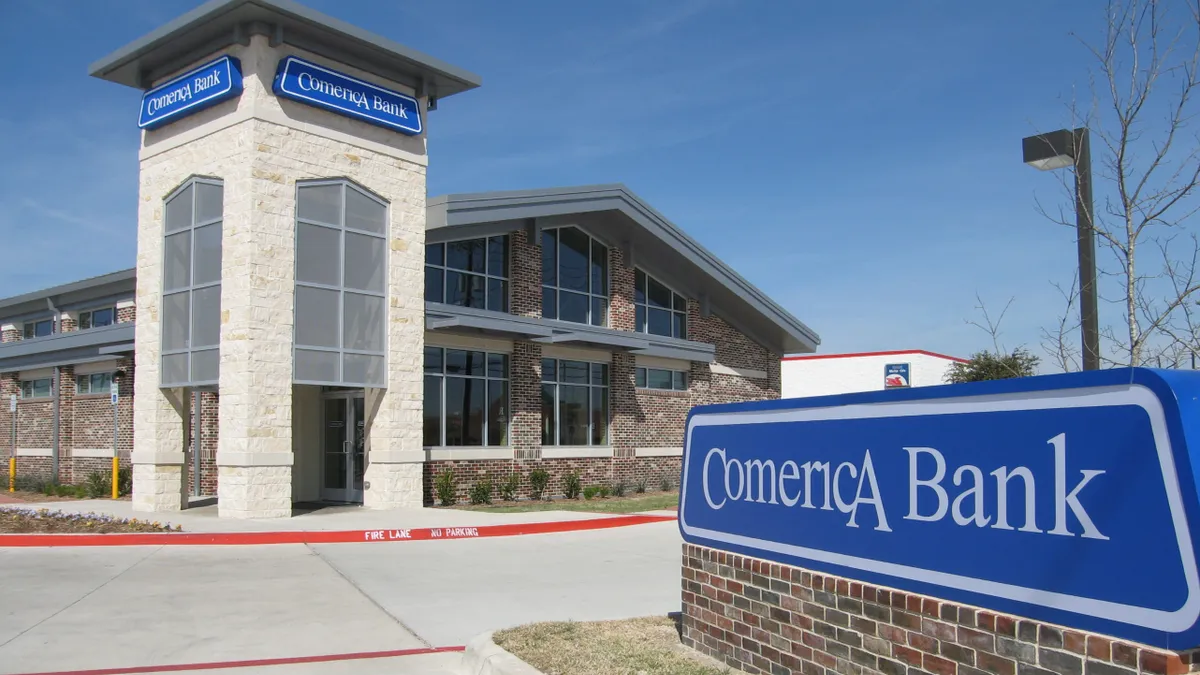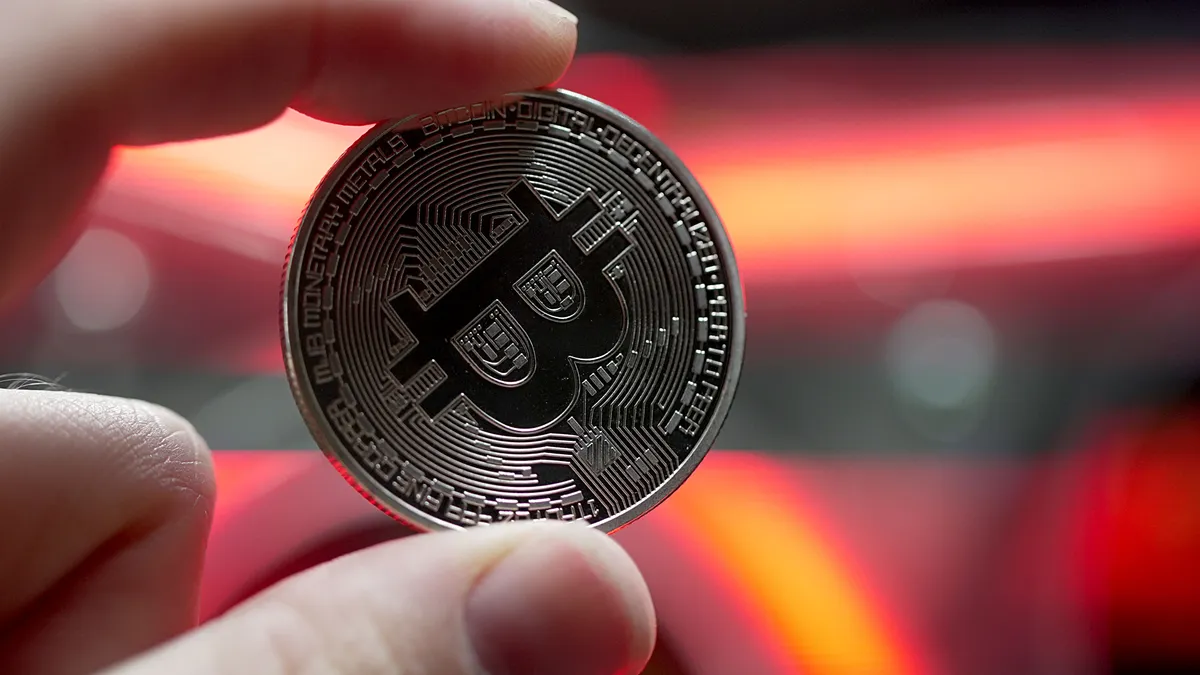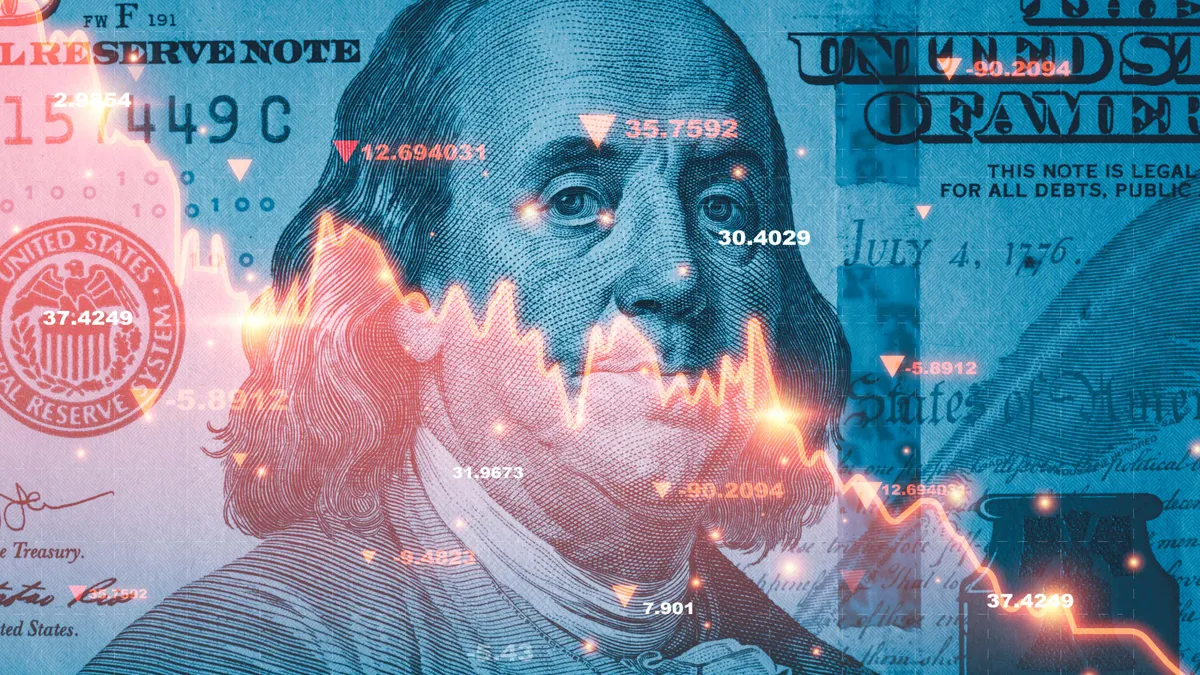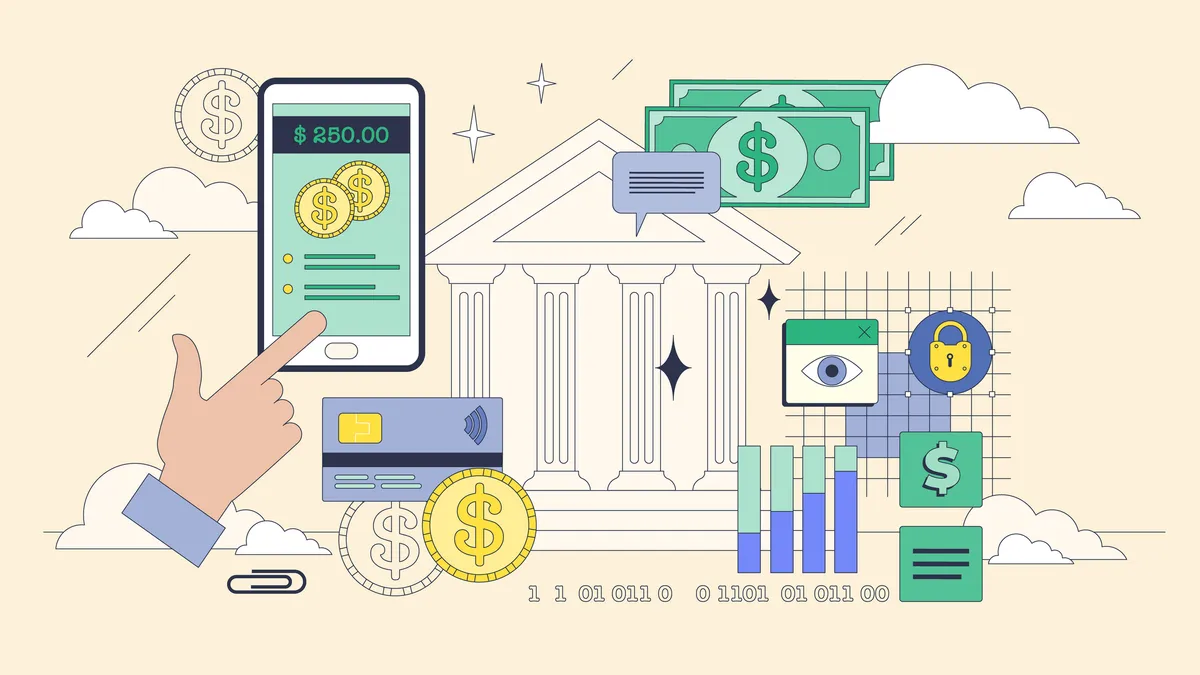Washington policymakers are angling for roles in the possible development of a digital dollar as individual and institutional interest in digital assets swells.
A Friday speech by Federal Reserve Gov. Lael Brainard, whom President Joe Biden nominated to serve as vice chair of the Fed board, and a Feb. 7 report from the Congressional Research Service (CRS) underscore the U.S. government’s rising interest in a central bank digital currency (CBDC).
While the Fed contemplates the possibility of issuing a digital dollar, with a public comment period underway on the topic, members of Congress are lining up to offer their legislative views of how a CBDC might be rolled out. The actions they take, and the speed with which they take them, could have significant consequences for America’s place in the global financial system.
New "digitalization and decentralization" trends offer potential benefits in reducing money transfer transaction costs, increasing financial inclusion and boosting competition, Brianard said Friday before the U.S. Monetary Policy Forum in New York. But they also present risks.
"With technology driving profound change, it is important we prepare for the financial system of the future and not limit our thinking to the financial system of today," she said.
A CBDC could potentially address two trouble points in banking and payments, specifically some Americans' lack of access to digital banking and payment services, and the inefficiency — through expense and a lagging pace —of cross-border payments, Brainard said.
Rising interest in CBDC
The market value of all cryptocurrencies has surged to about $2 trillion, from $100 billion five years ago, Brainard said. Additionally, the supply of stablecoins — digital assets tied to fiat currency — climbed nearly sixfold last year to about $165 billion, from $29 billion a year earlier, she said, noting a concentration in four stablecoins.
Brainard also pointed to a Pew Research Center study last year in which 16% of respondents said they had personally invested in, traded or used a cryptocurrency, compared to less than 1% of respondents in 2015.
"If the past year is any guide, the crypto financial system is likely to continue to grow and evolve in ways that increase interconnectedness with the traditional financial system," she said.
Brainard suggested the U.S. government and private sector should work together on a CBDC.
"It is prudent to explore whether there is a role for a CBDC to preserve some of the safe and effective elements of the financial system of the present in a way that is complementary to the private sector innovations transforming the financial landscape of the future," she said.
With respect to stablecoins, Brainard noted three potential risks: "run risk," where there might be a sudden demand for redemption; "settlement risk," where there is the uncertainty of transactions being completed; and "systemic risk," where the troubles with a stablecoin could ripple through to the broader financial system.
Given the increasing popularity of stablecoins and the fact that the market is dominated by two providers, it could be crucial that the Fed develop a government alternative that could lend stability in the digital financial ecosystem, she said.
International implications
Brainard stressed the need for understanding what repercussions might arise for the U.S. as other countries advance CBDCs. She noted China’s progress in creating the digital yuan and the influence it could have on the global financial system.
"A U.S. CBDC may be one potential way to ensure that people around the world who use the dollar can continue to rely on the strength and safety of U.S. currency to transact and conduct business in the digital financial system," she said.
She detailed the steps the Fed has taken so far, including issuing a report on the consideration of a CBDC, and its Federal Reserve Bank of Boston research with the Massachusetts Institute of Technology. Still, Fed Chair Jerome Powell has been clear he’s unlikely to make a move on the effort without clear direction from Congress and the president.
Congressional considerations of a CBDC
To that point, the CRS on Feb. 7 provided its own overview of how a CBDC might unfold, noting, "Congress might choose to legislate in order to either explicitly authorize or mandate the Fed create a CBDC and shape its features and uses, or to prevent one from being introduced."
That nonpartisan research arm of Congress laid out a laundry list of questions policymakers must grapple with before making a decision. The queries included consideration of what a U.S. CBDC would compete with, how it would promote financial inclusion, how it could affect privacy, whether it would make monetary policy more effective and how it might improve cross-border payments.
The report detailed the strides other countries are making in studying CBDCs, noting that 86% of 65 central banks surveyed in 2020 by the Bank of International Settlements (BIS) were actively engaged in CBDC work, though only 14% had taken concrete steps, like launching a pilot program.
Specifically, the report called out China’s progress, with about 140 million people opening digital wallets that allowed them to use the new currency and the country’s collaboration with two big digital payment companies, WeChat Pay and AliPay, on the project.
The report also noted that the chairs of the Senate Banking Committee and the House Financial Services Committee each introduced legislation in the 116th Congress that would have created a CBDC and digital wallets at the Fed, and that in the current 117th Congress, four additional House bills related to a CBDC have been introduced, with varying approaches to the innovation.
As Congress considers what specific policy goals might be met by a CBDC and how it might be designed to accomplish those objectives, it’s also likely to consider the "costs, benefits and uncertainties" of a digital dollar, the report said. It will also have to weigh whether to pursue the idea in conjunction with international efforts by the BIS, the Committee on Payments and Market Infrastructures and the Group of 20, among others working on such research.
"In light of other countries’ efforts, Congress may consider whether there is a first-mover advantage to creating a CBDC in terms of usage and standard-setting, or whether there are advantages from taking a wait-and-see or lessons-learned approach," the CRS report said.



